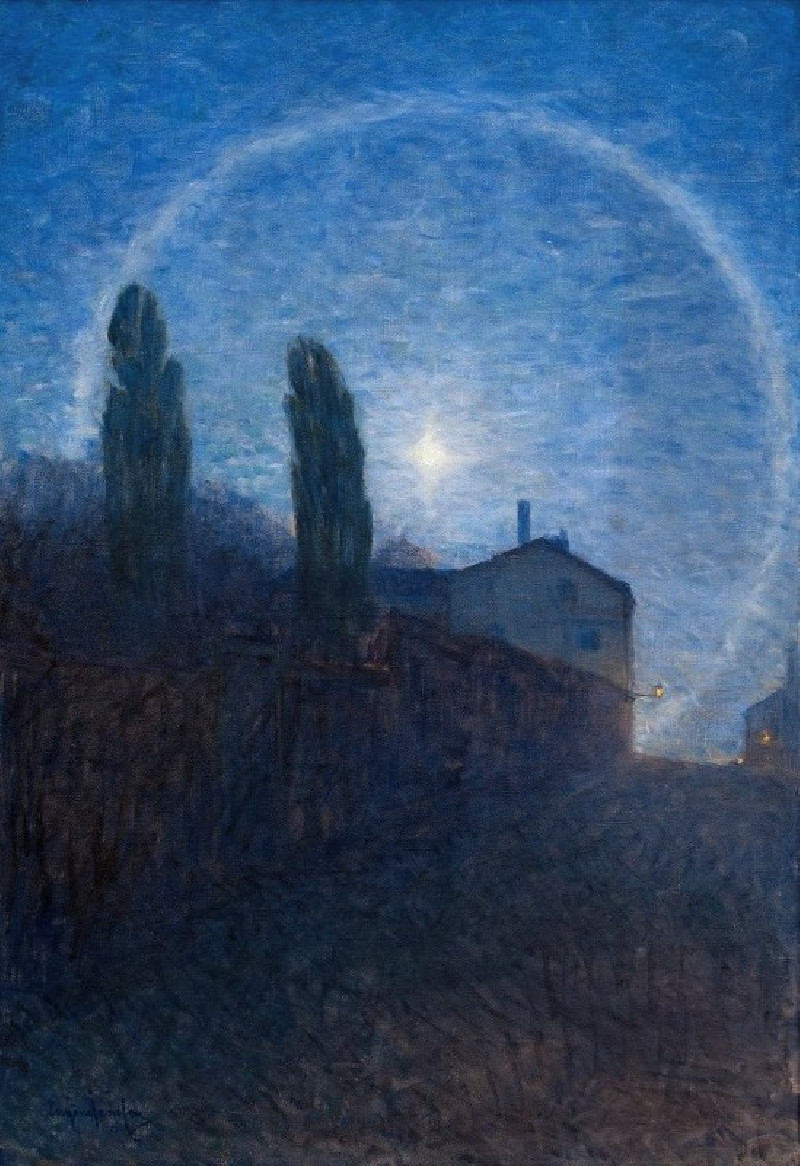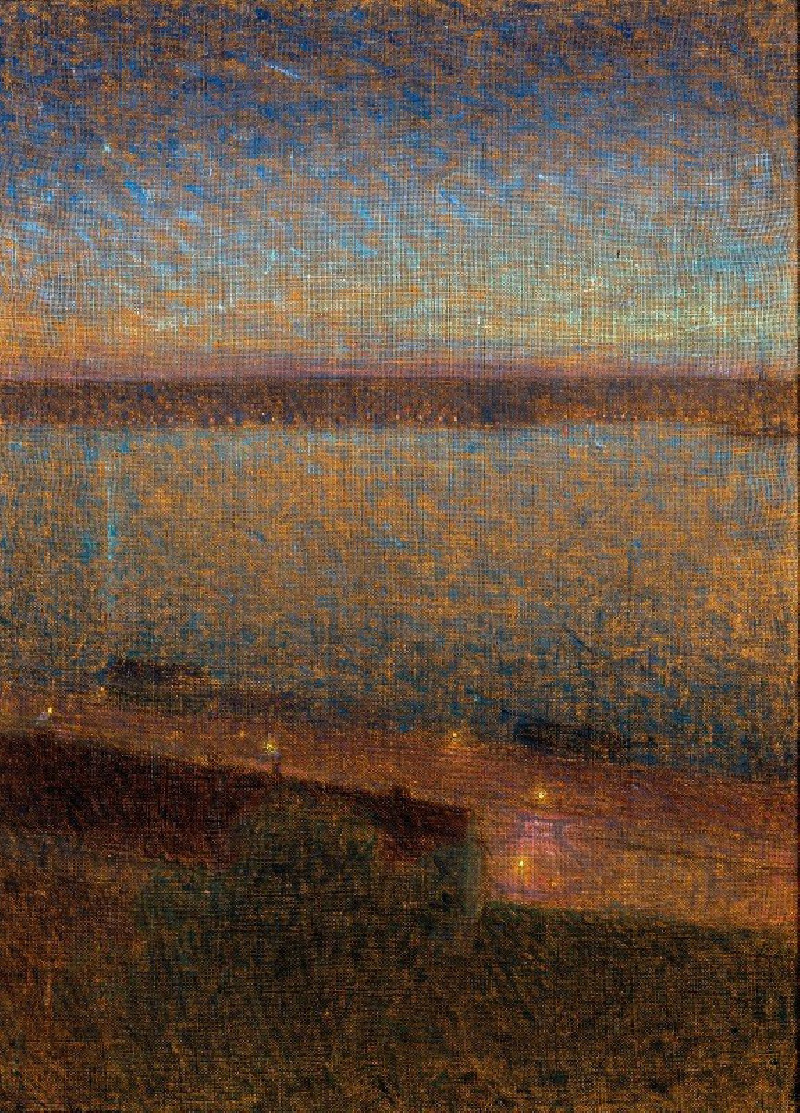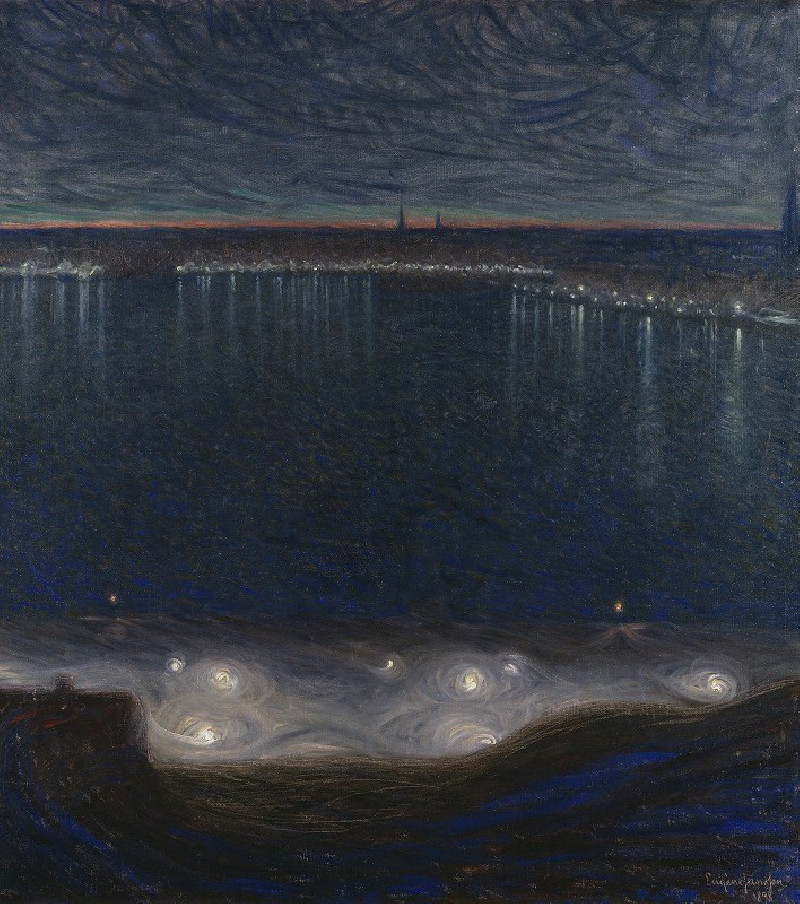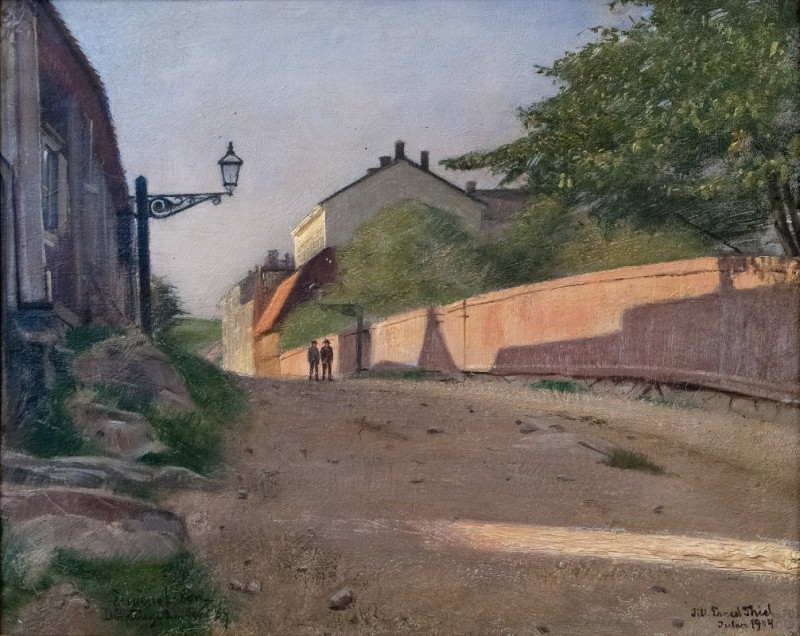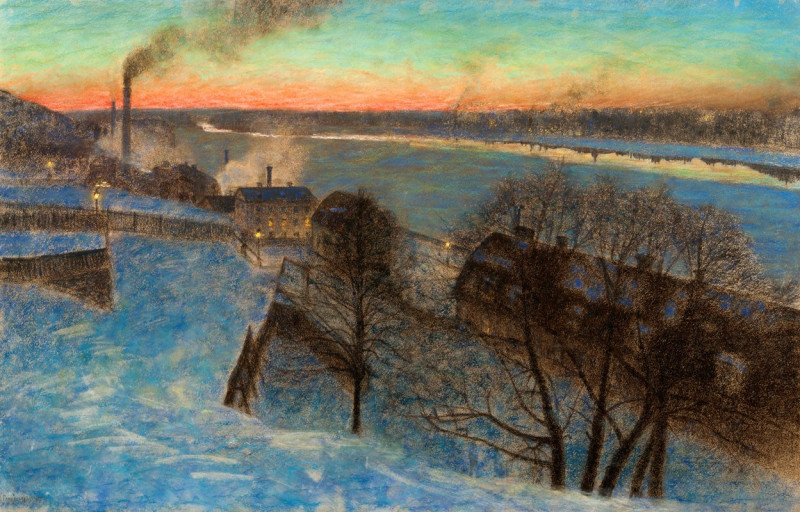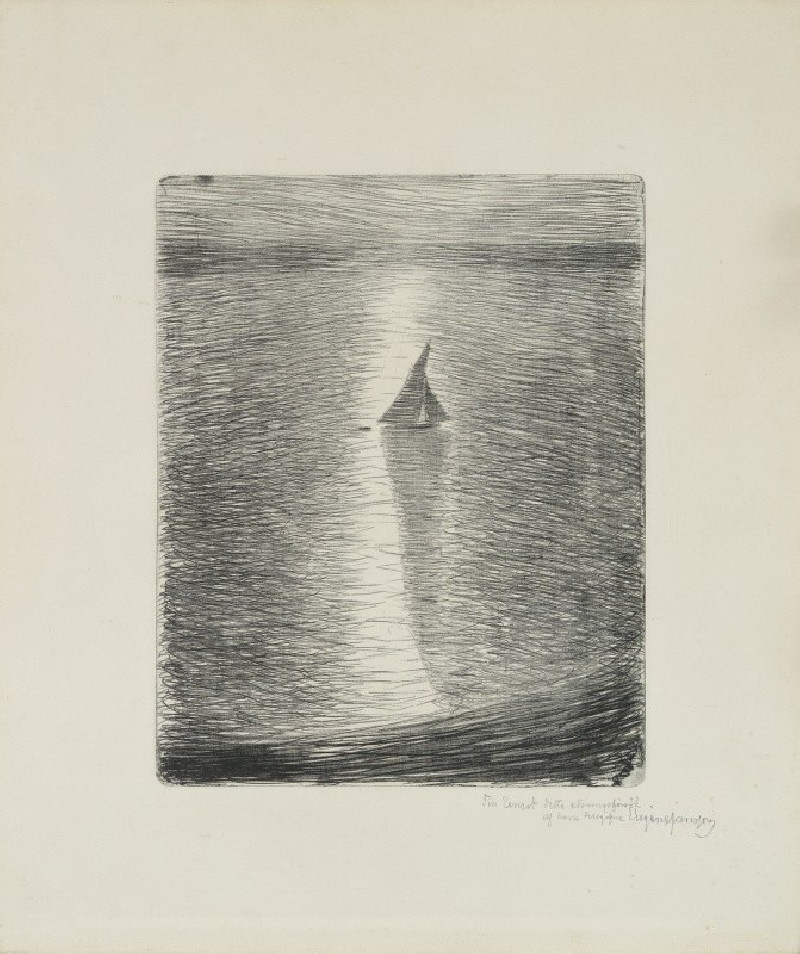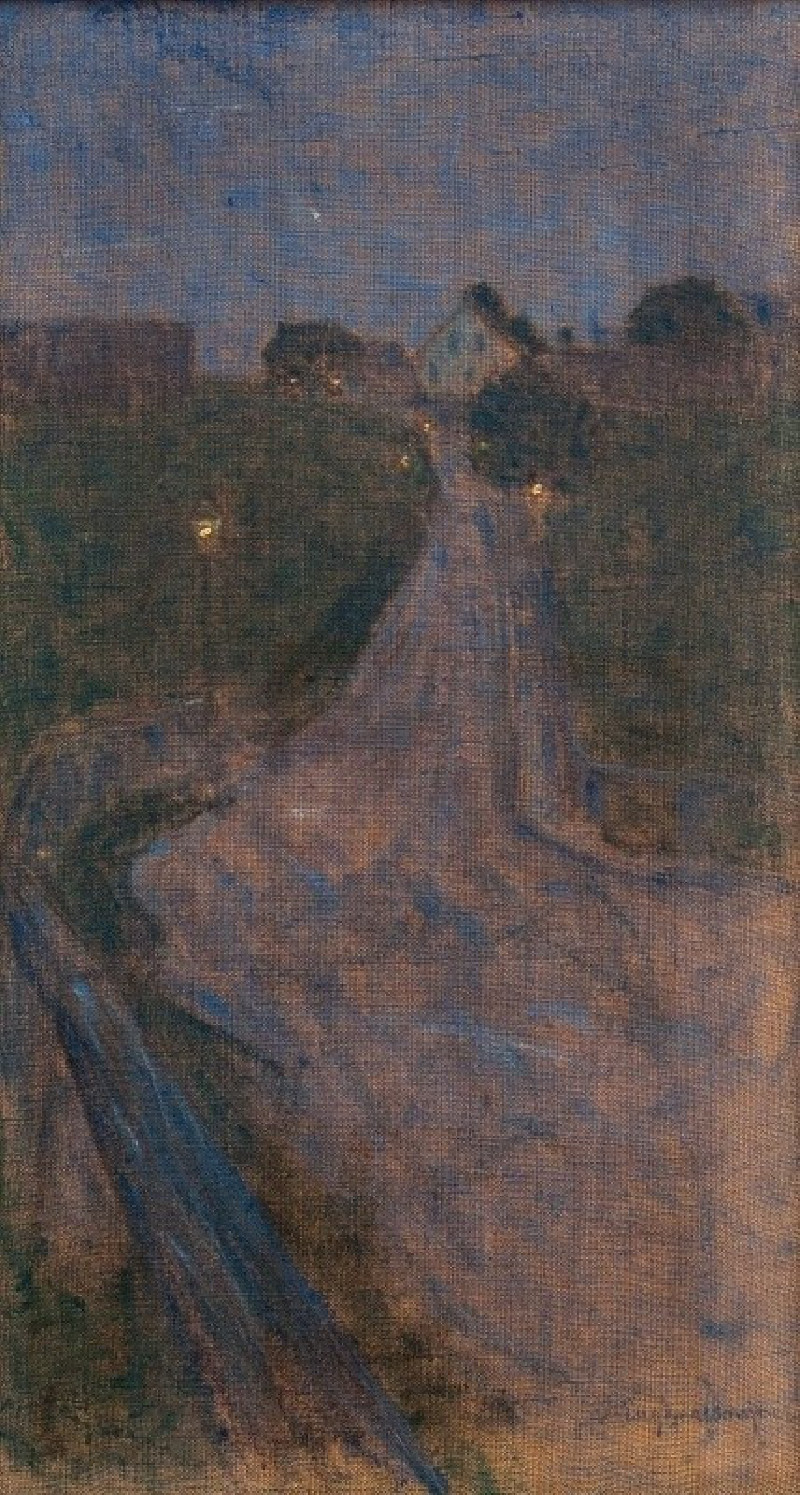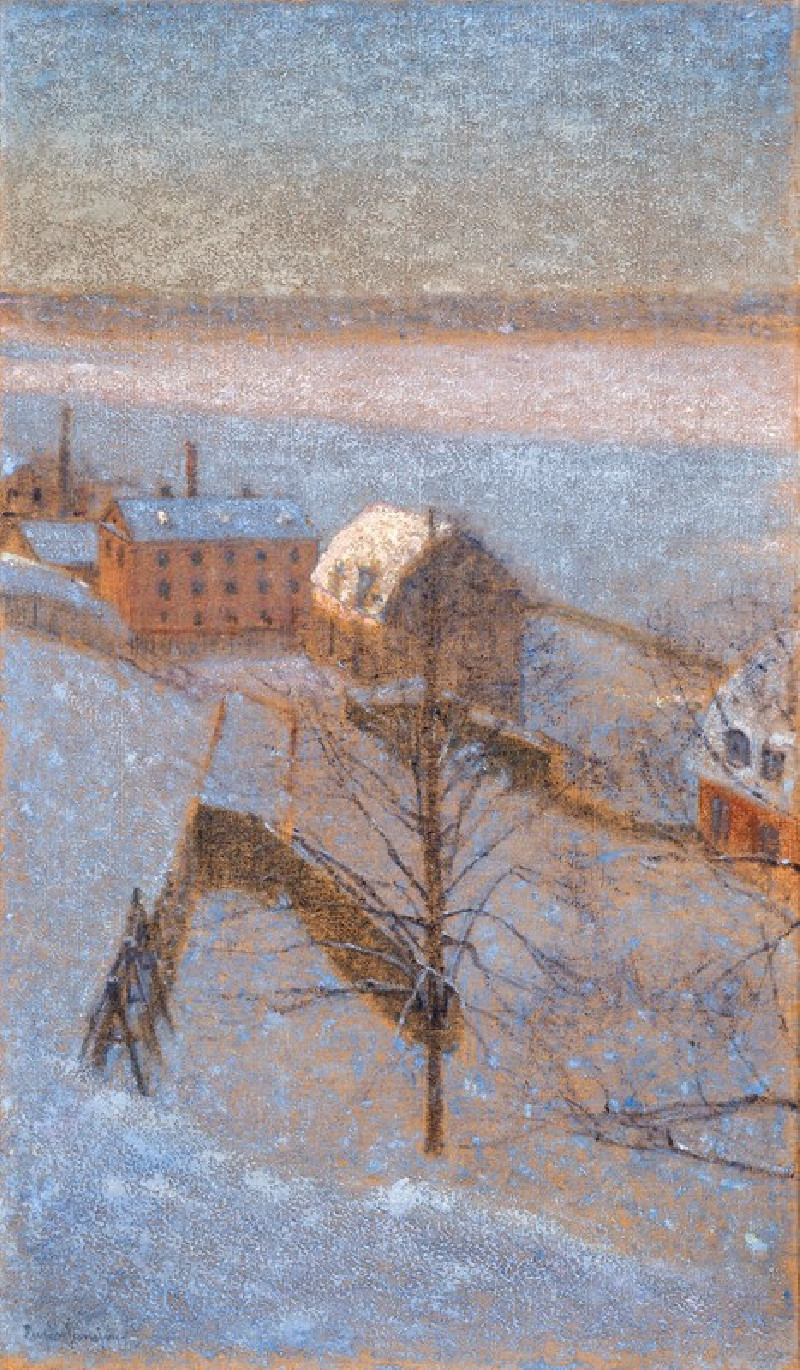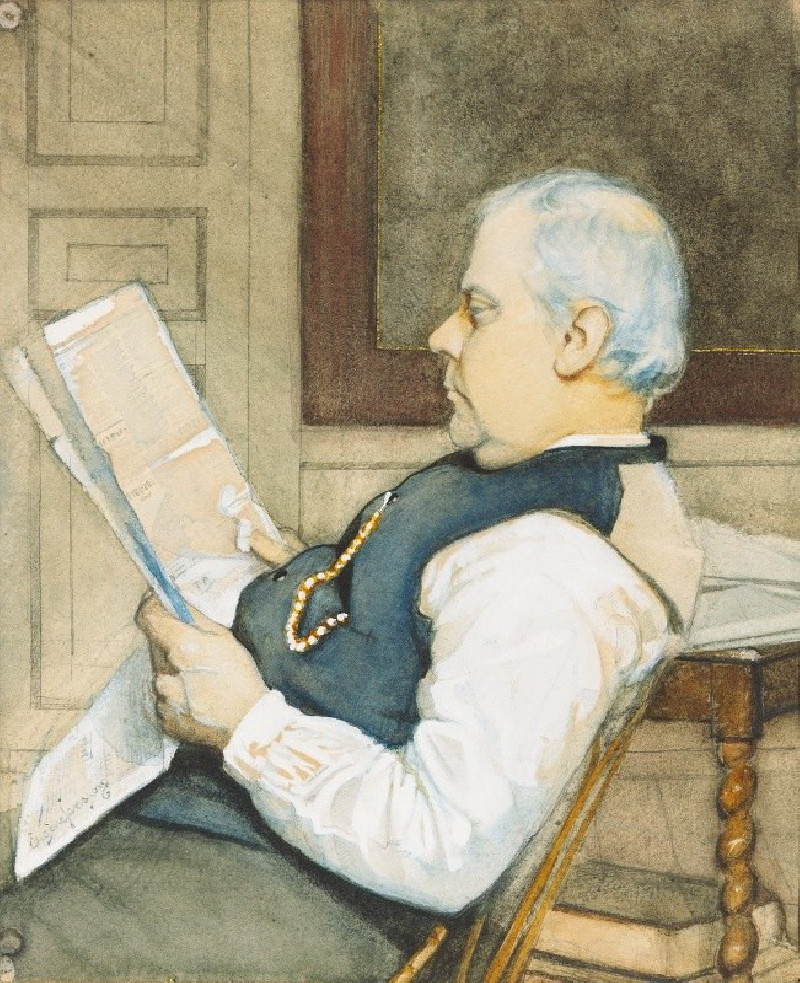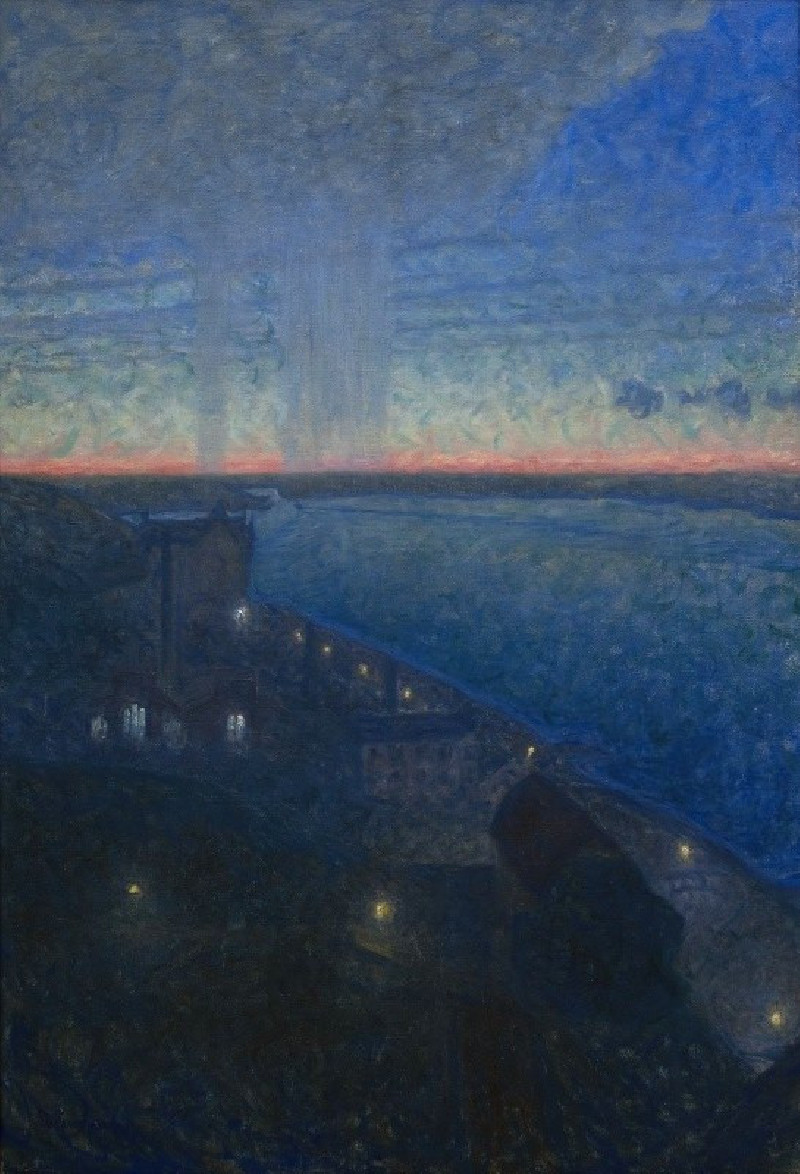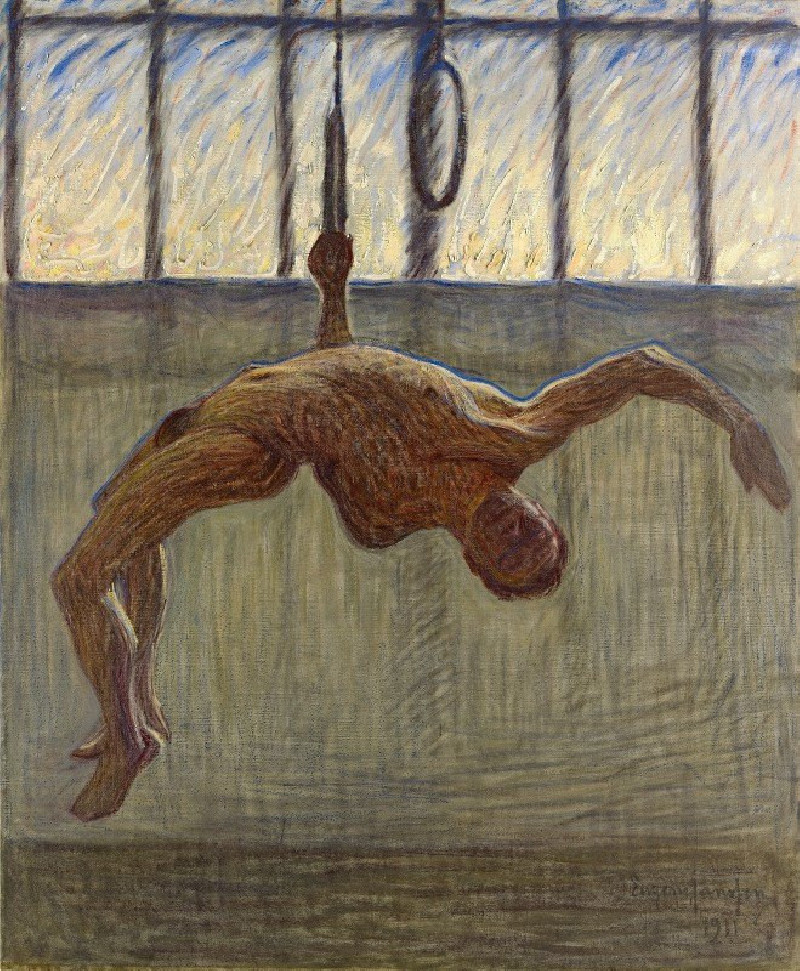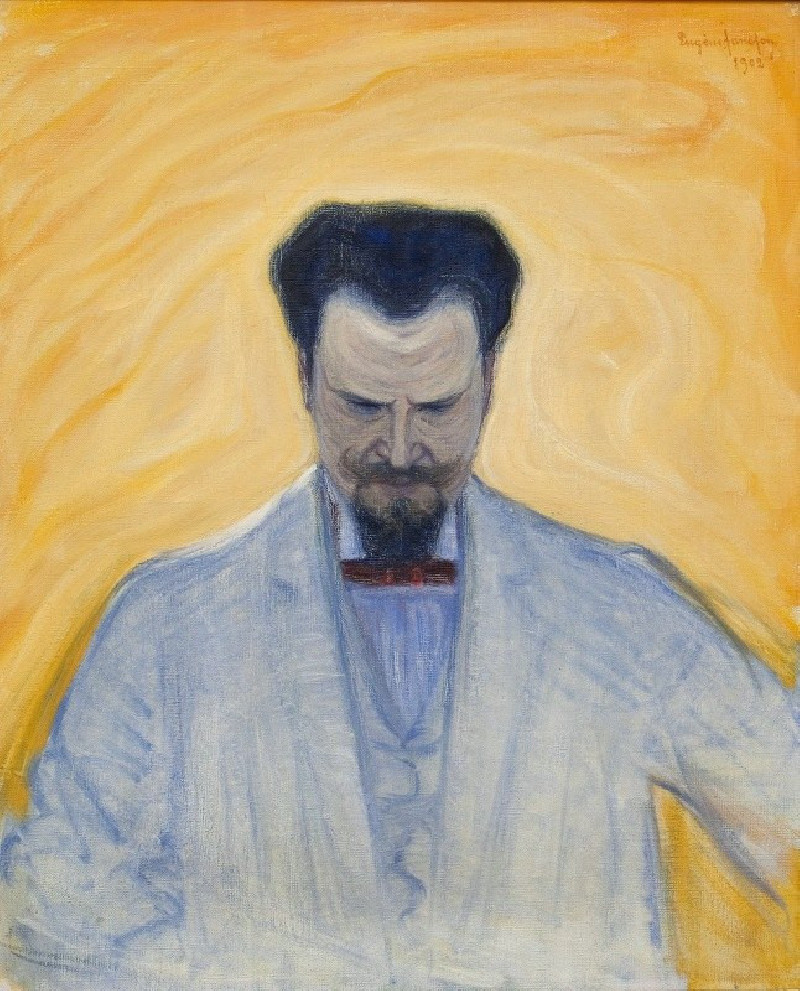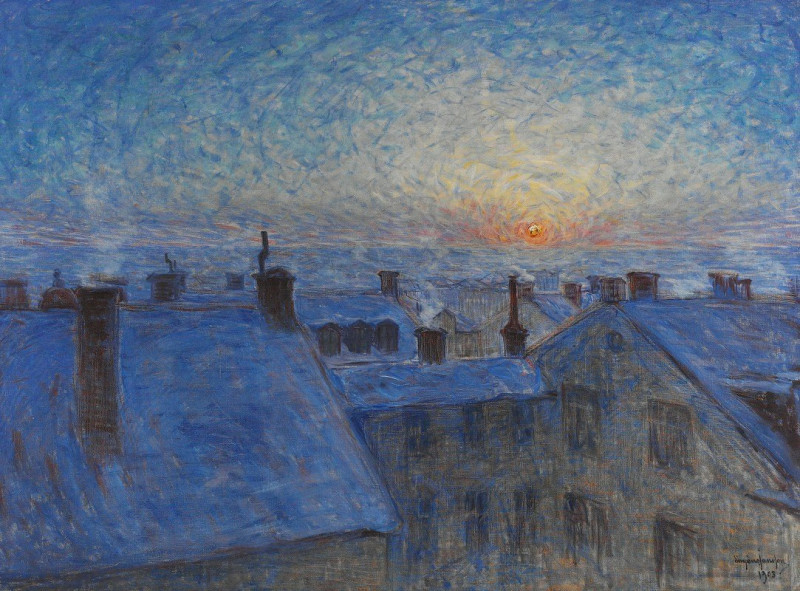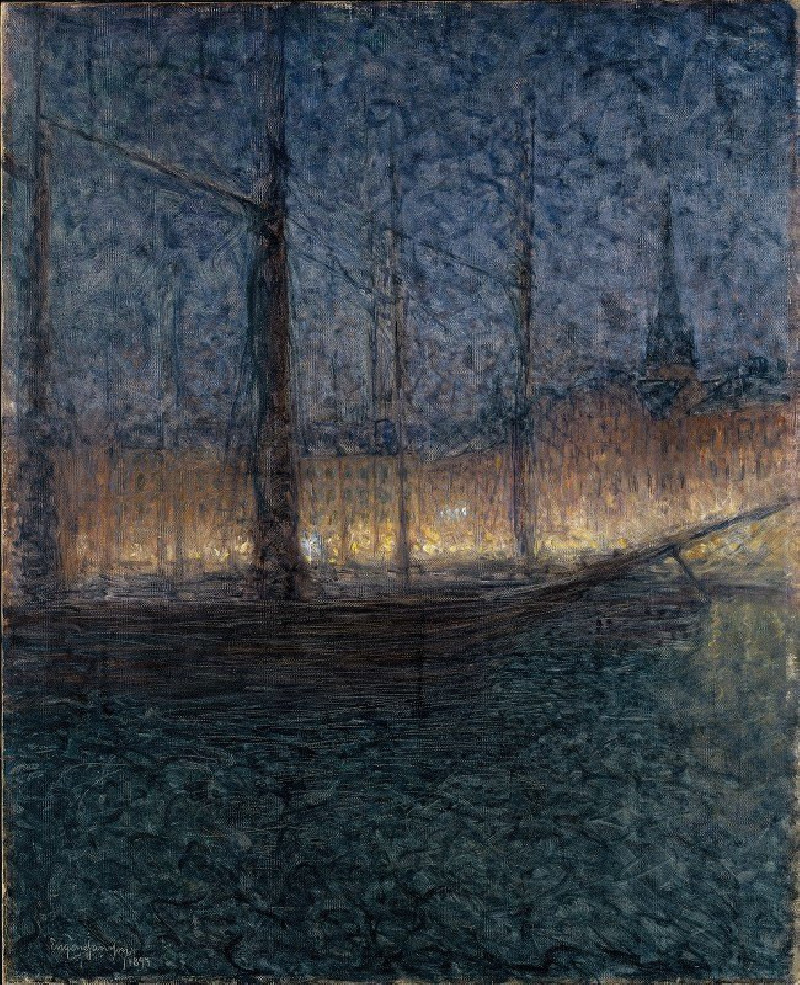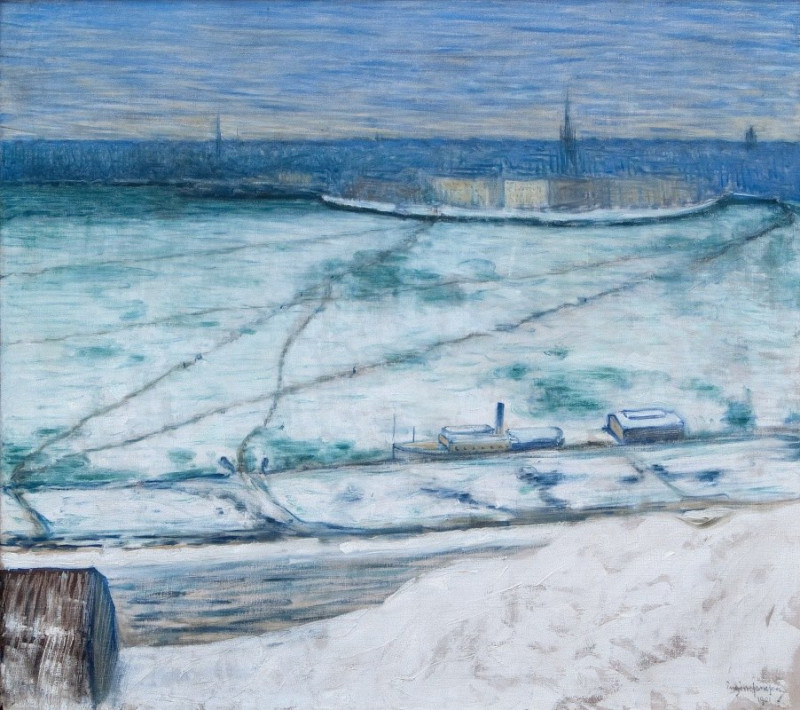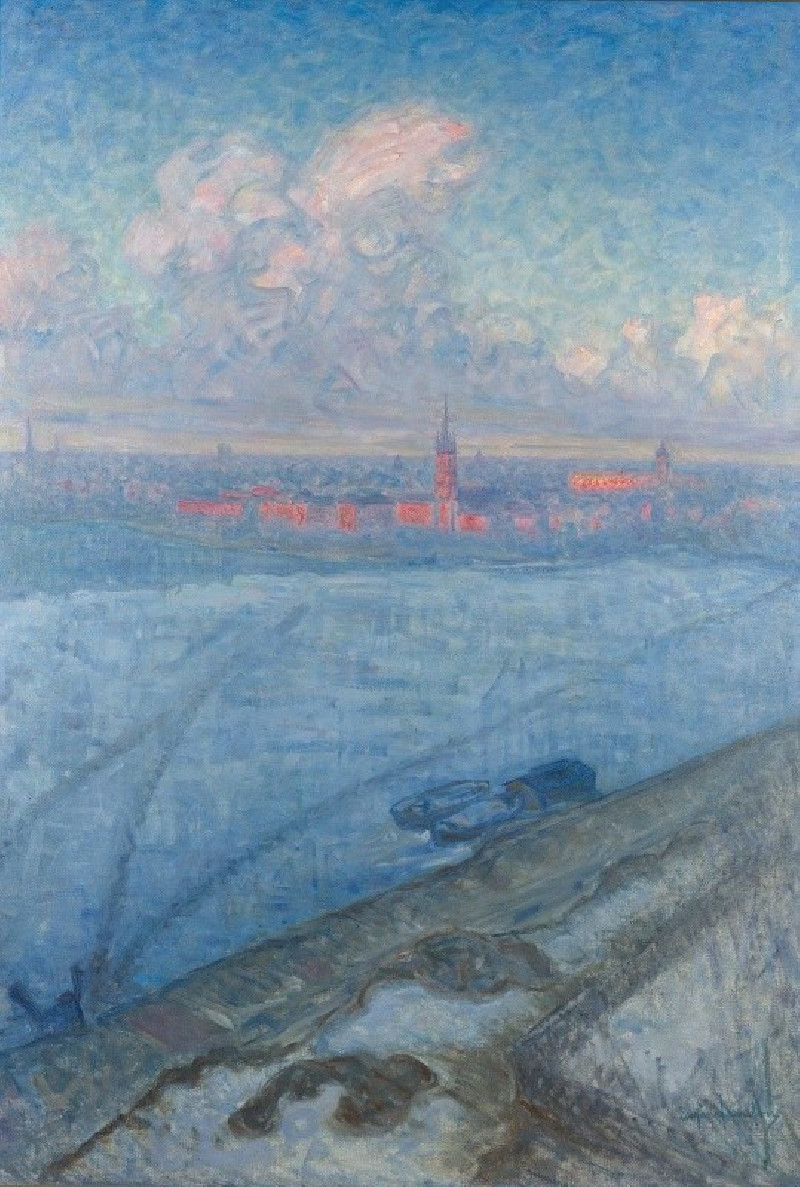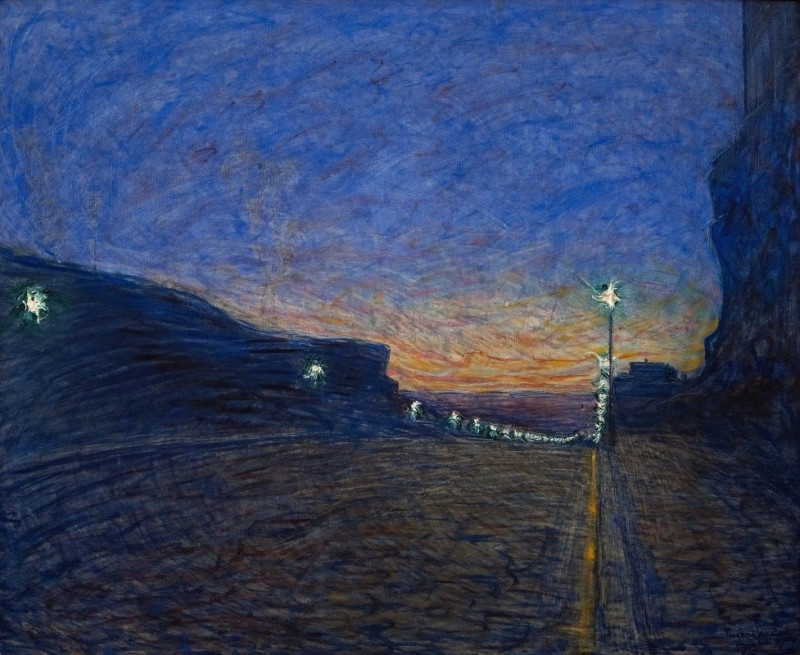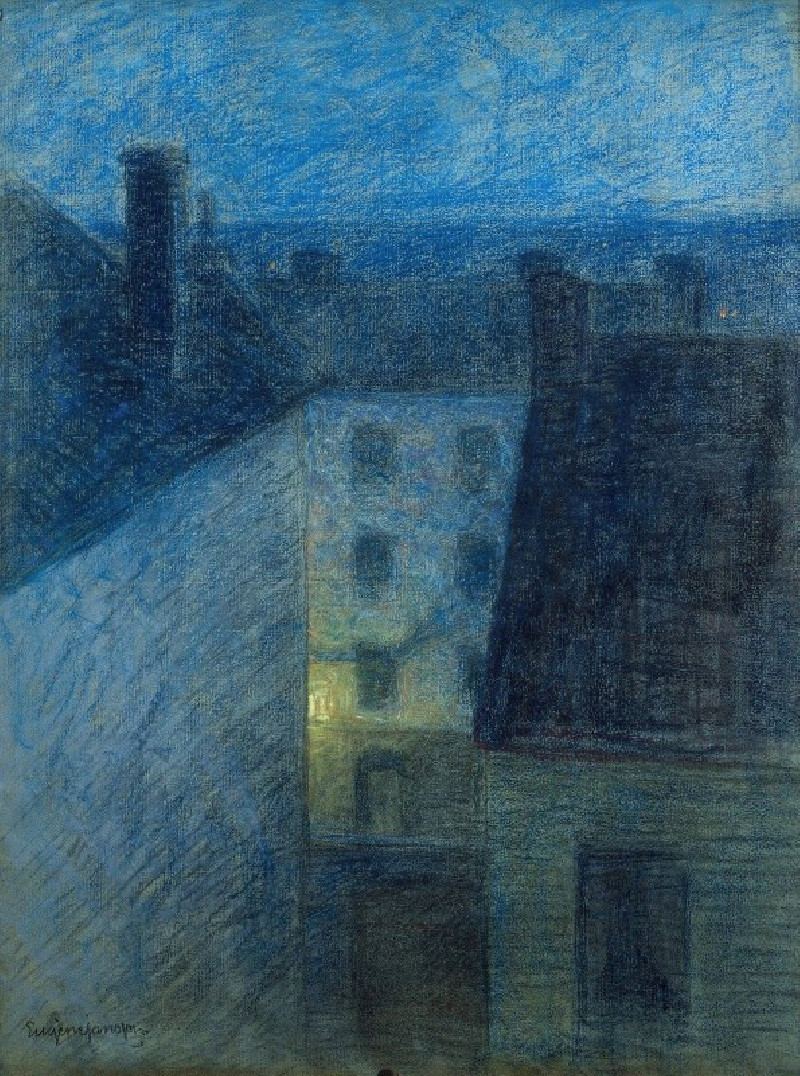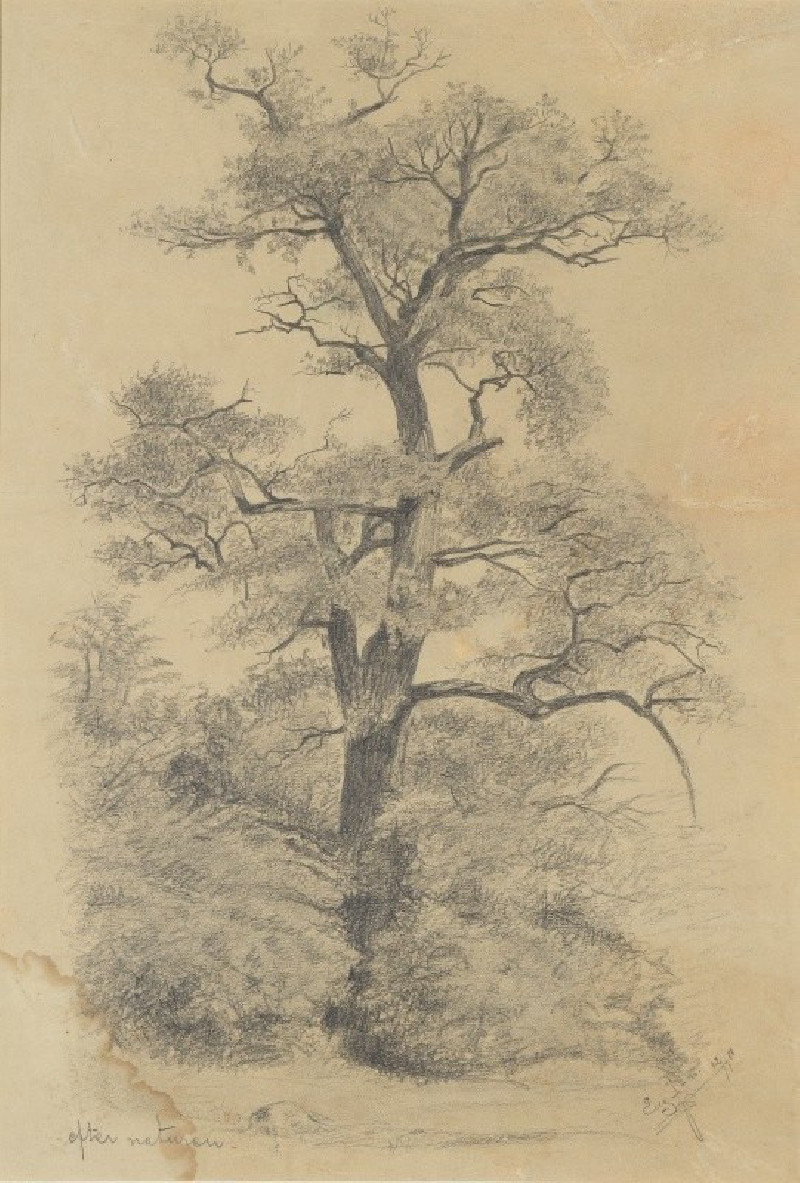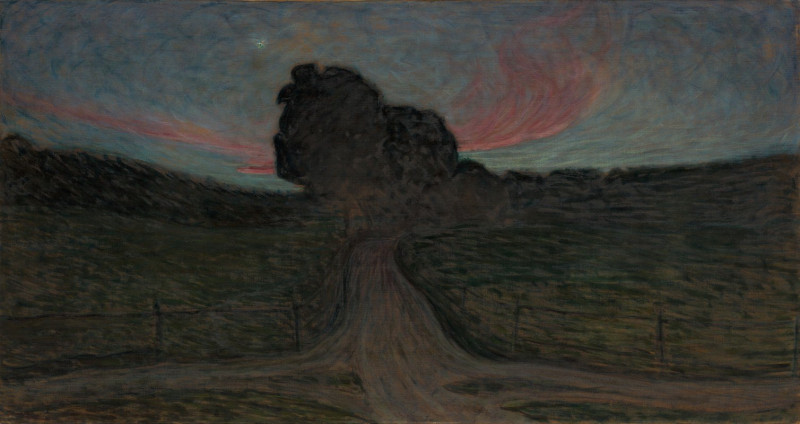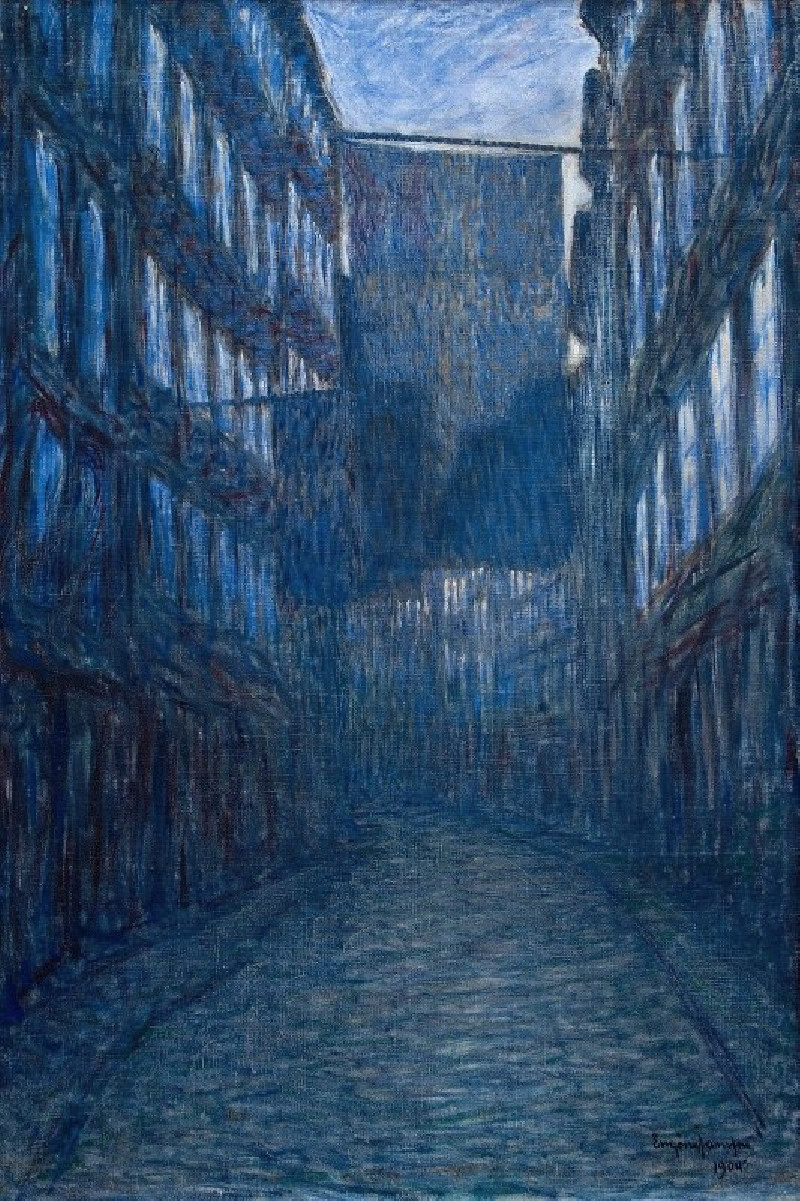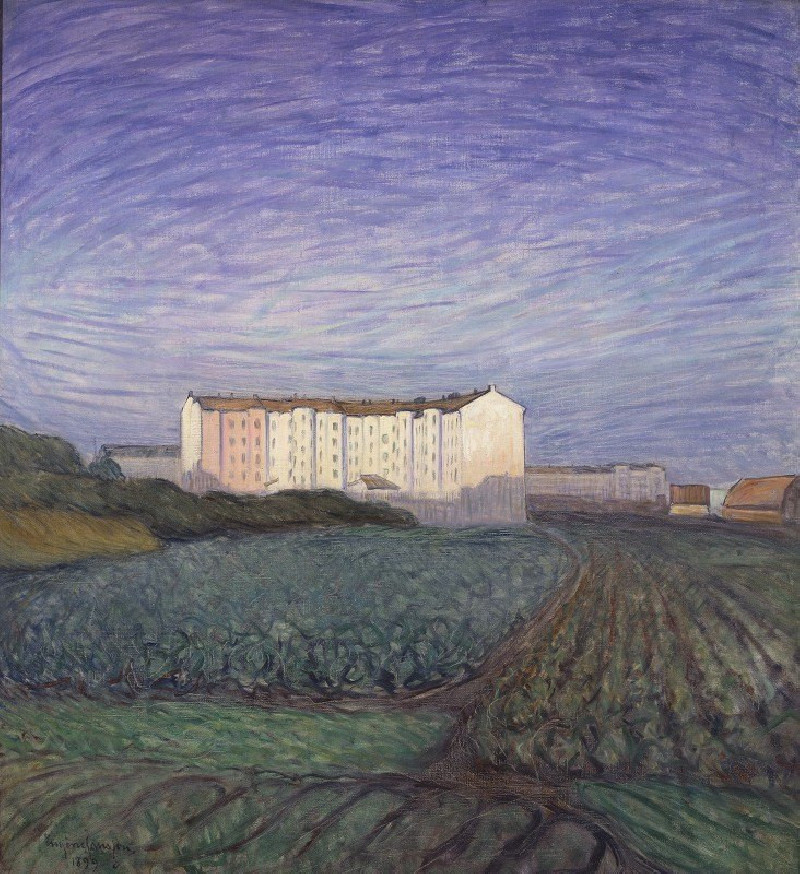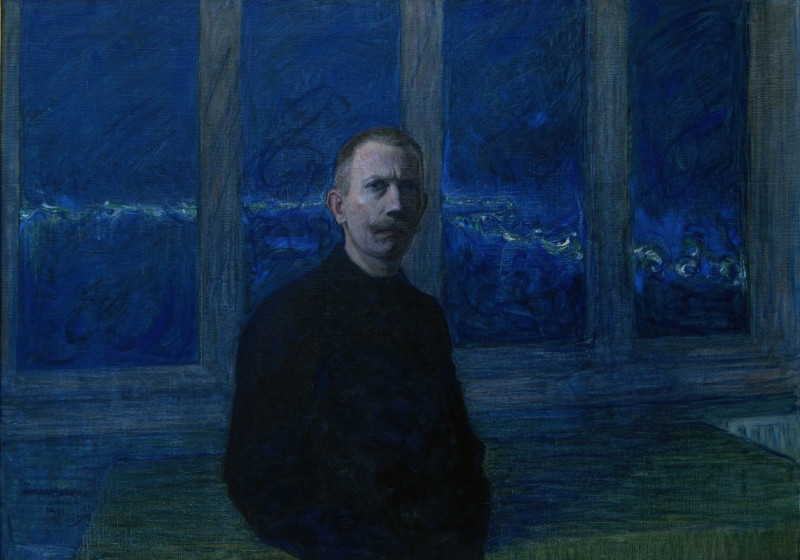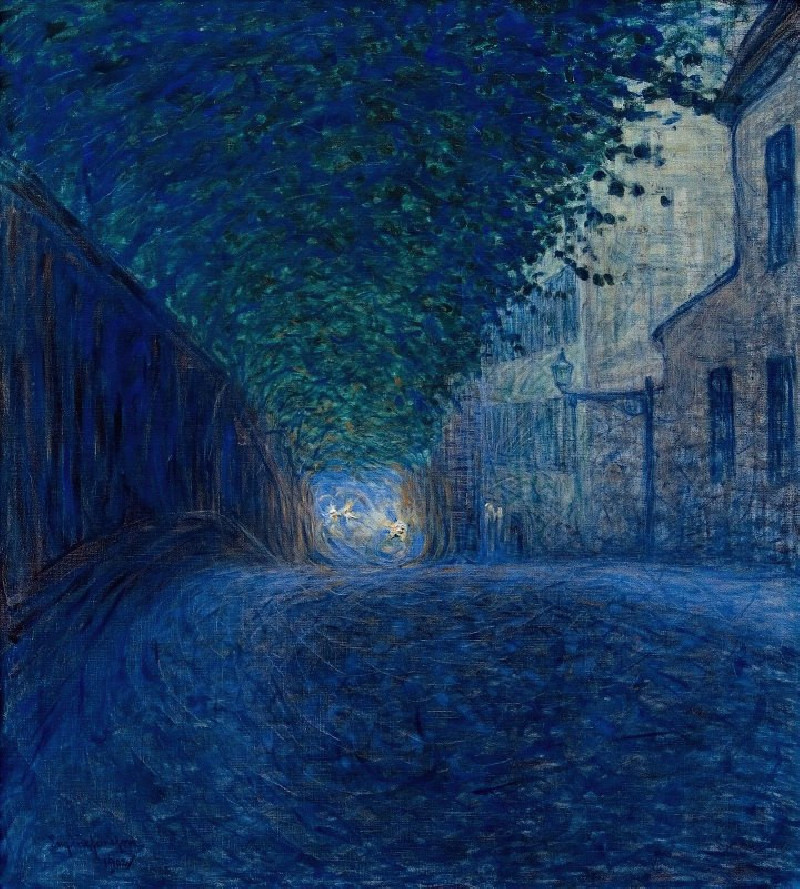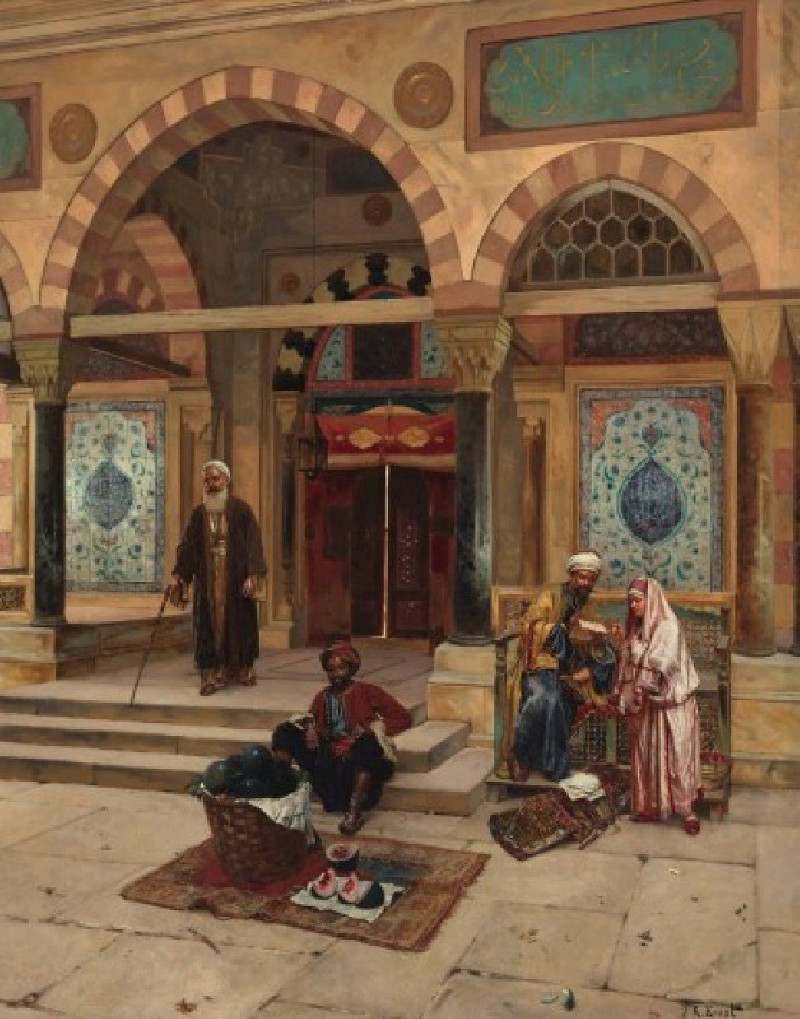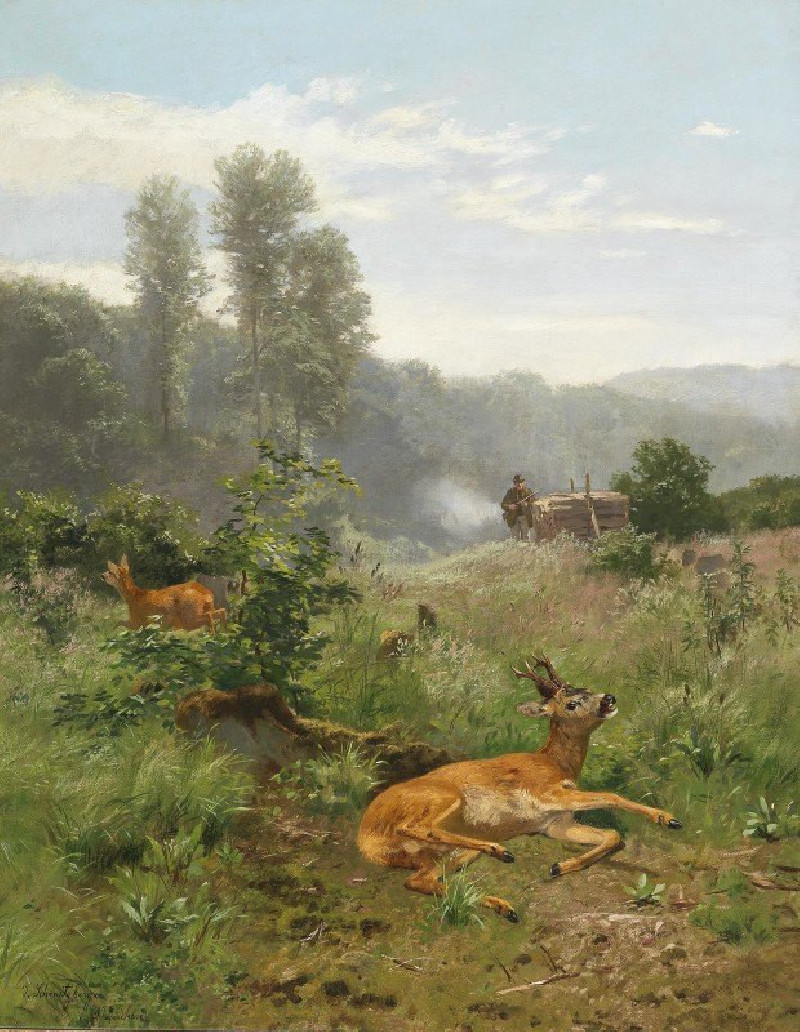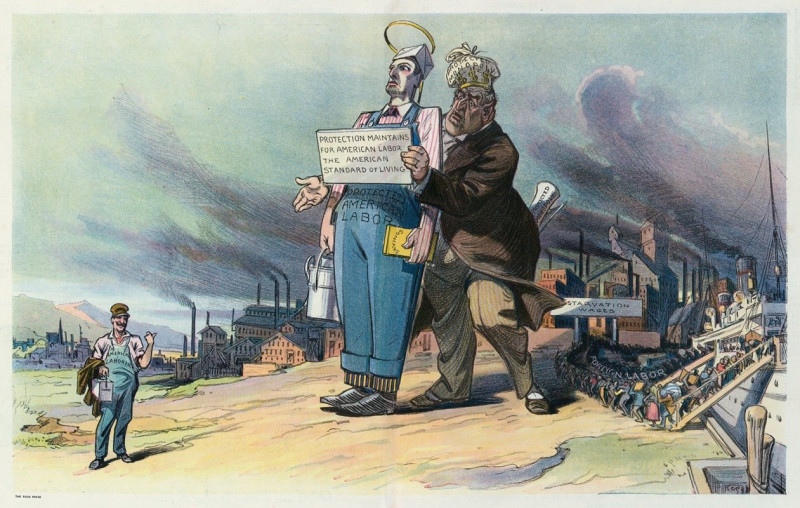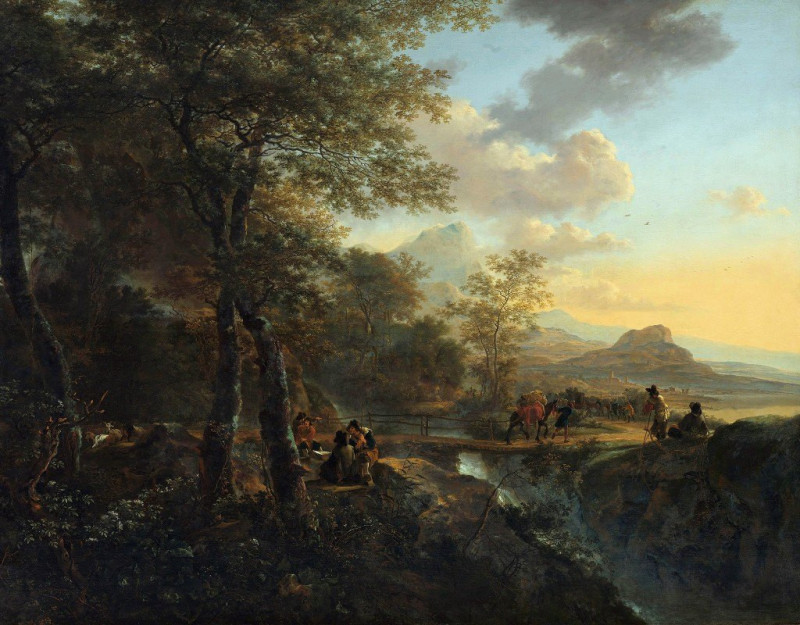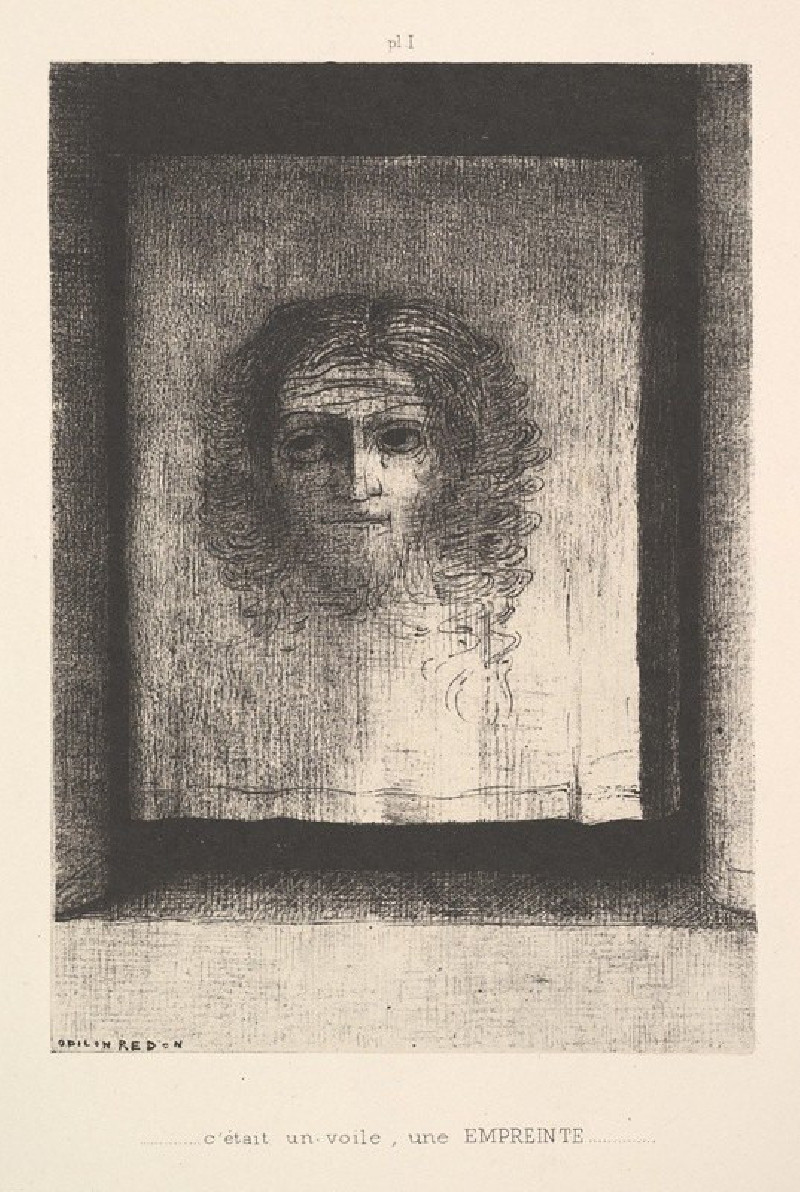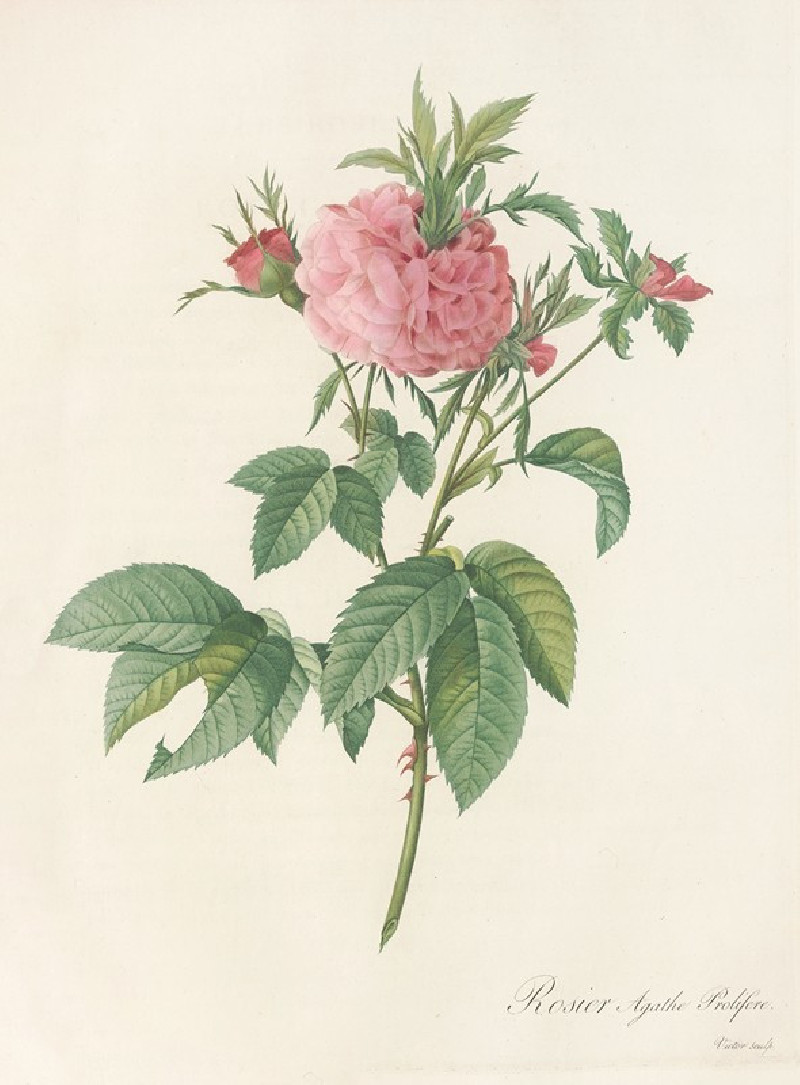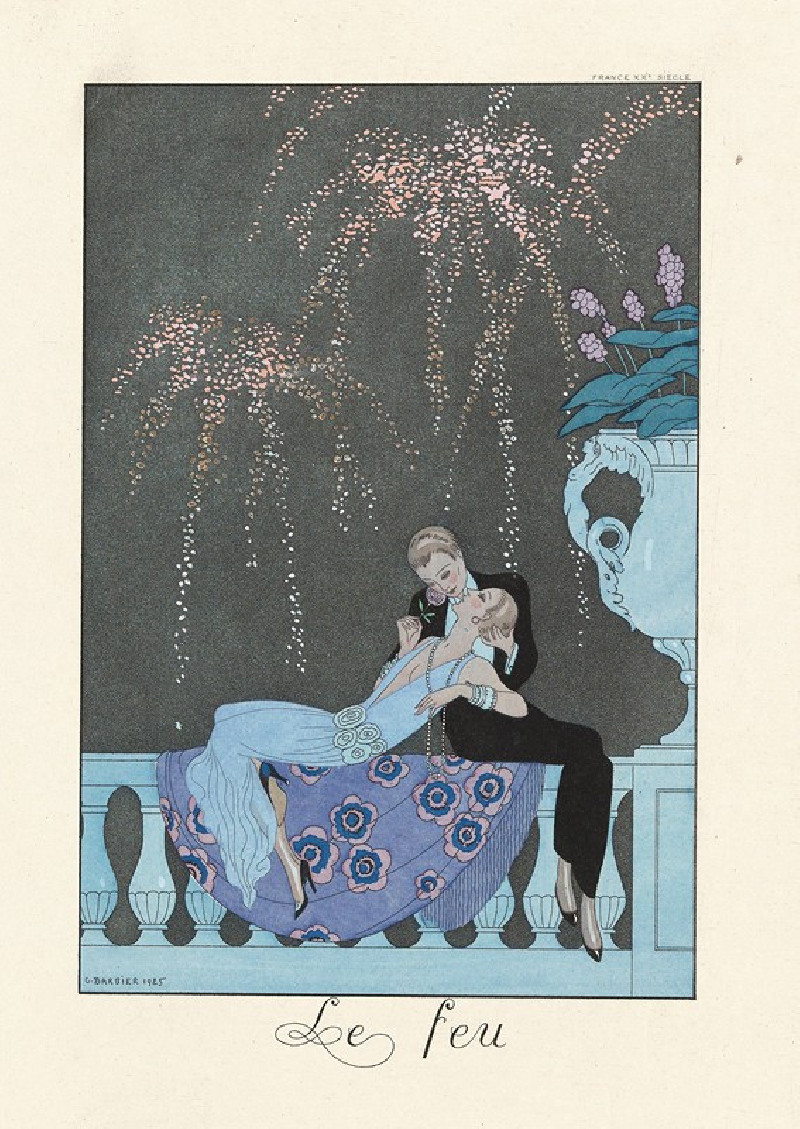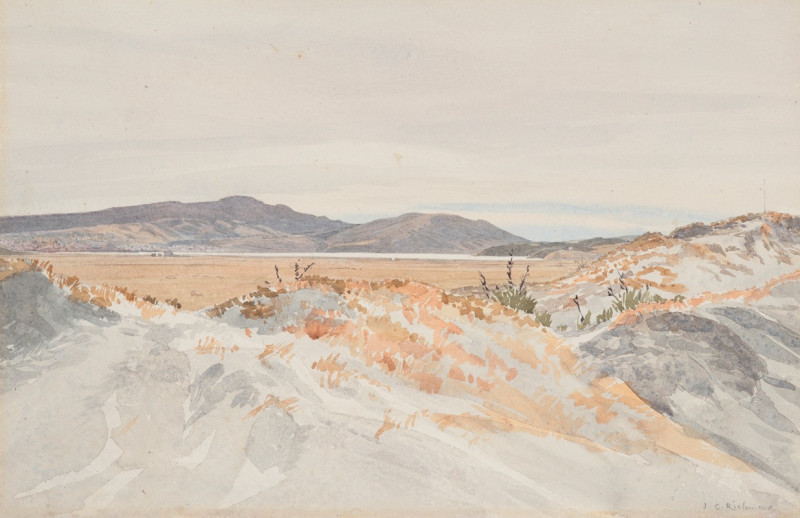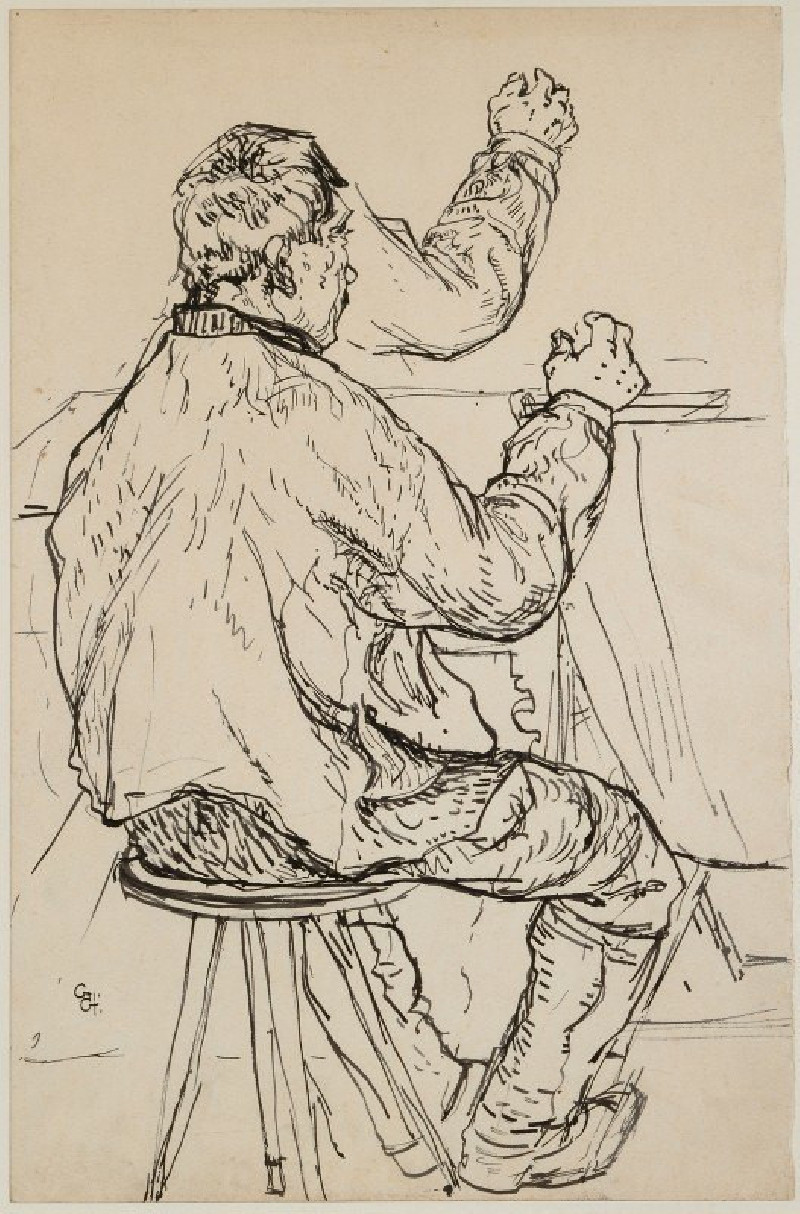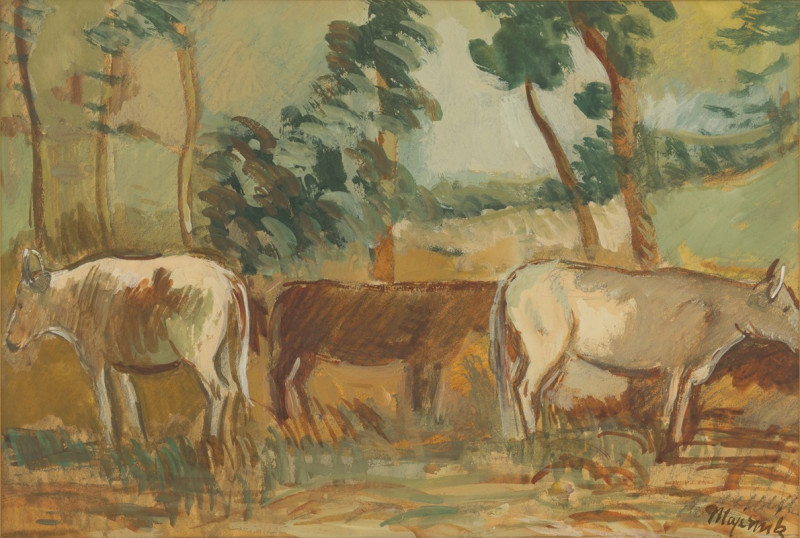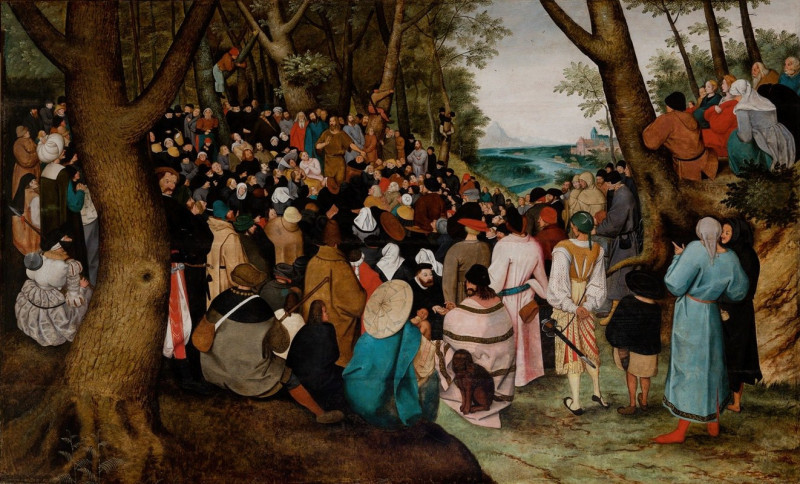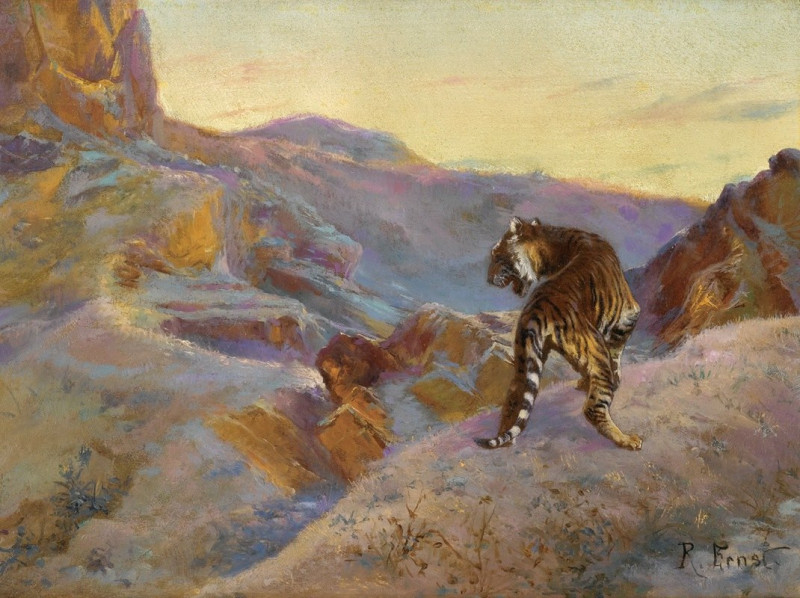Lunar Halo (1896)
Technique: Giclée quality print
Recommended by our customers
More about this artwork
Mysterious and compelling, "Lunar Halo" by Eugène Jansson invites viewers into a nocturnal world where the ethereal beauty of the night sky dominates the landscape. Painted in 1896, this artwork captures a stunning natural phenomenon—the lunar halo. The painting features a large, luminous ring encircling the moon, a spectacle caused by the refraction of moonlight from ice crystals in the upper atmosphere.The scene is set in a serene, somewhat somber setting with a house perched quietly on the edge of a hill. Dark silhouetted figures of trees, possibly cypress, add to the haunting atmosphere, standing quietly against the night sky. The house, cloaked in shadows, has a light glowing through one window, suggesting life in the midst of the still and expansive night. The foreground is draped in darkness, enhancing the glow of the halo and the subtle illumination of the landscape below.Jansson's skillful use of blues and darker tones conveys the coolness of the night, while his brushwork imbues the scene with a dreamlike quality, almost as if the viewer is glimpsing through a veil of sleep or memory.
Delivery
Returns
Eugène Fredrik Jansson (18 March 1862, Stockholm – 15 June 1915, Skara) was a Swedish painter known for his night-time land- and cityscapes dominated by shades of blue. Towards the end of his life, from about 1904, he mainly painted male nudes. The earlier of these phases has caused him to sometimes be referred to as blåmålaren, "the blue-painter".

